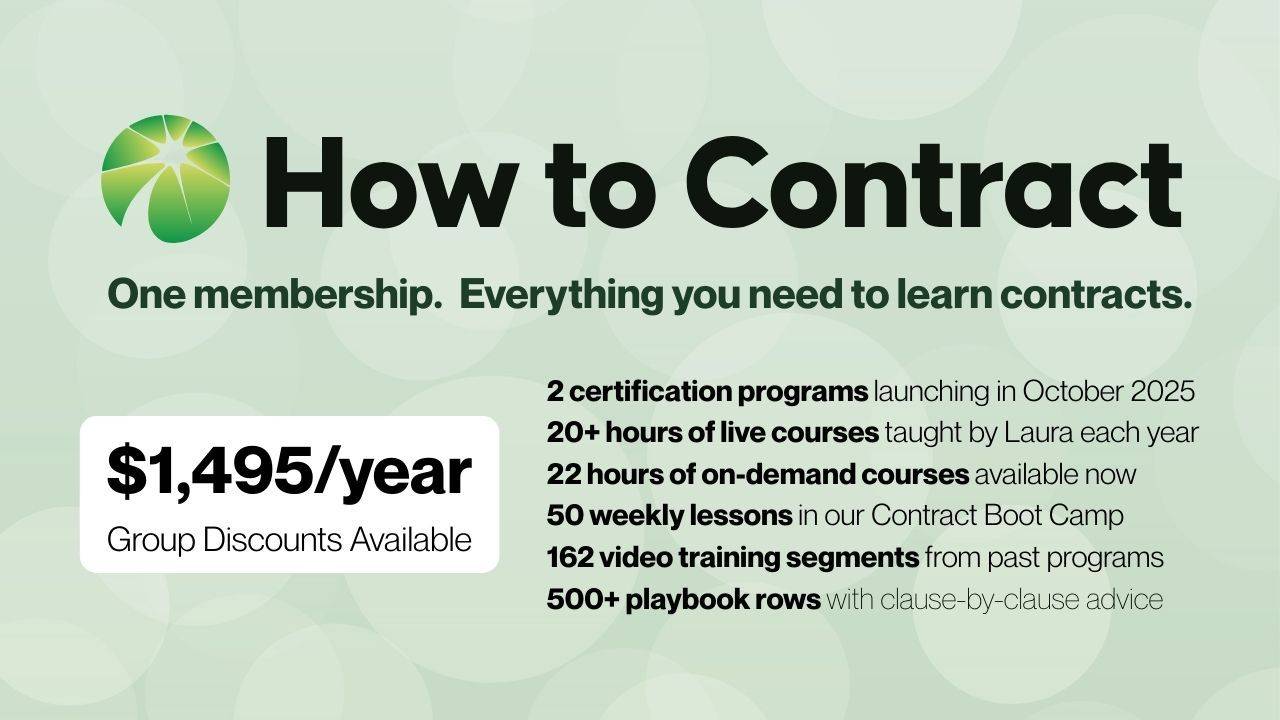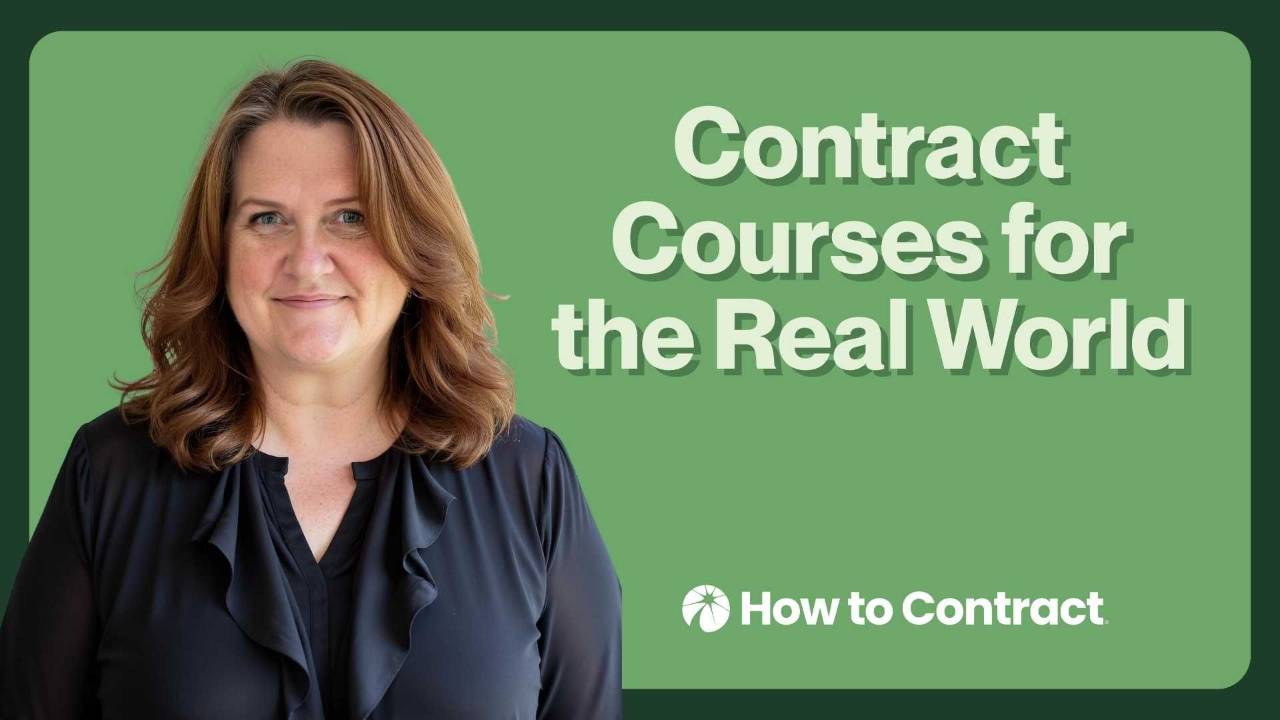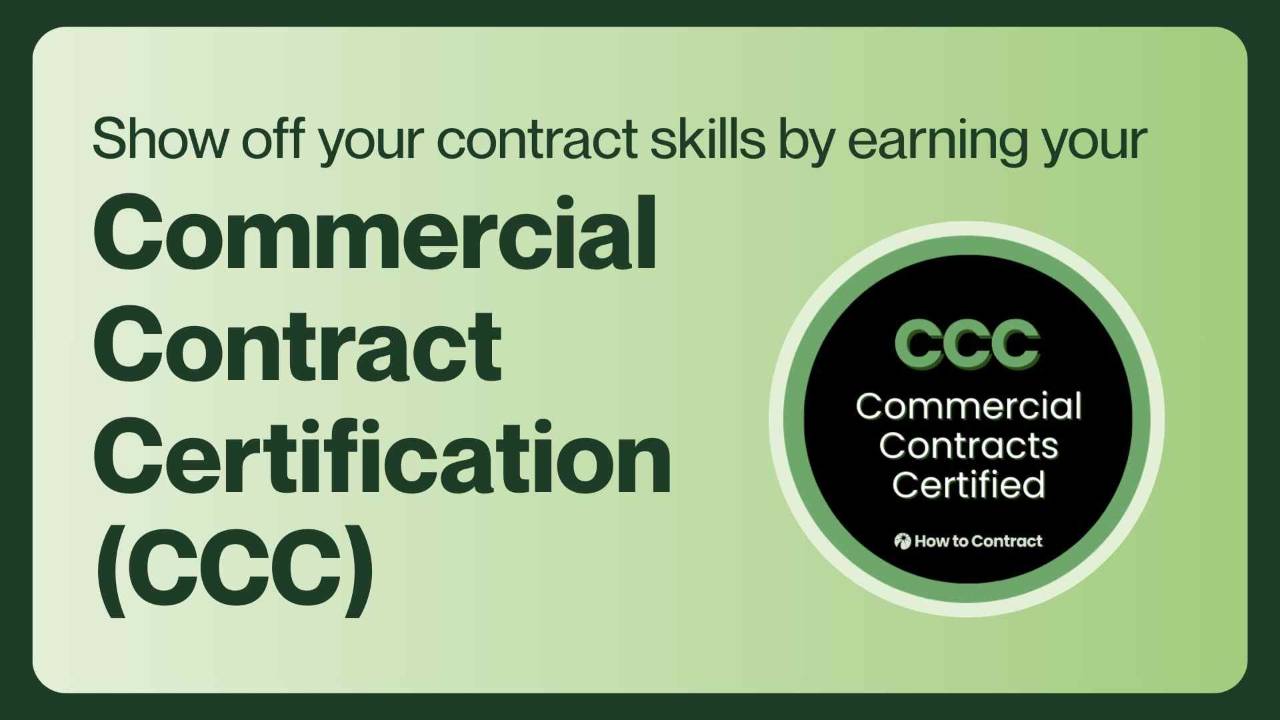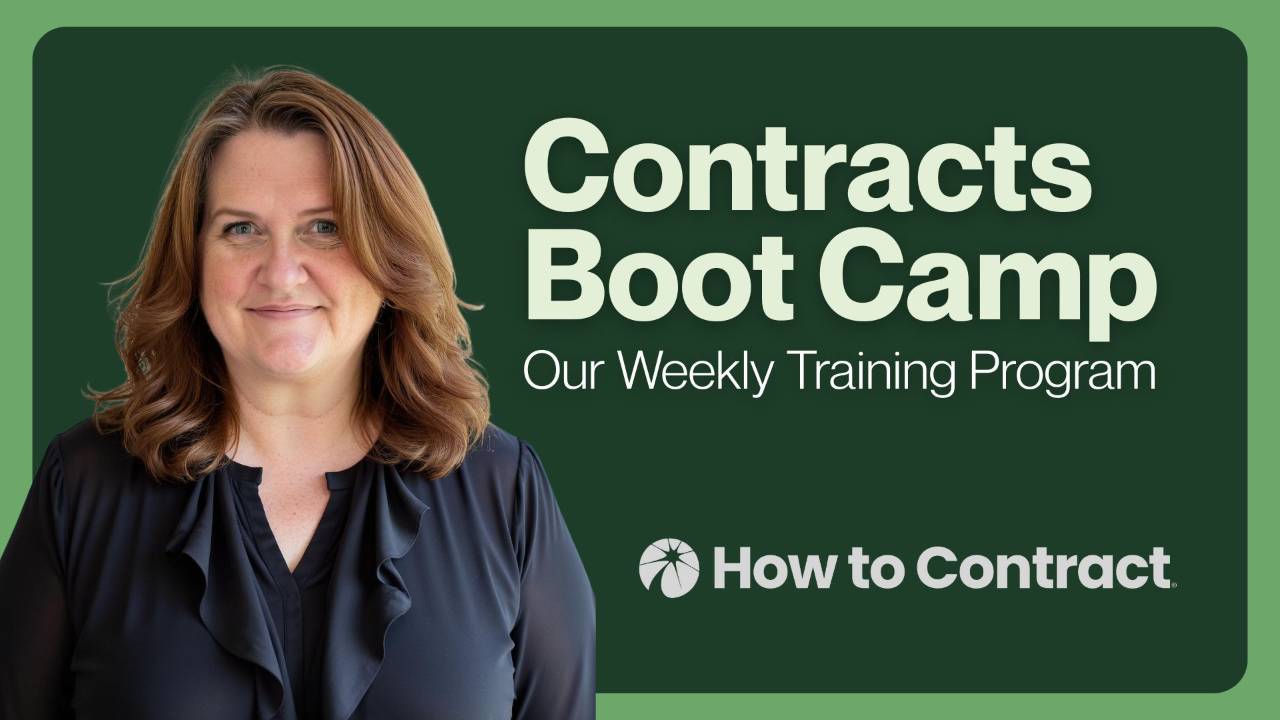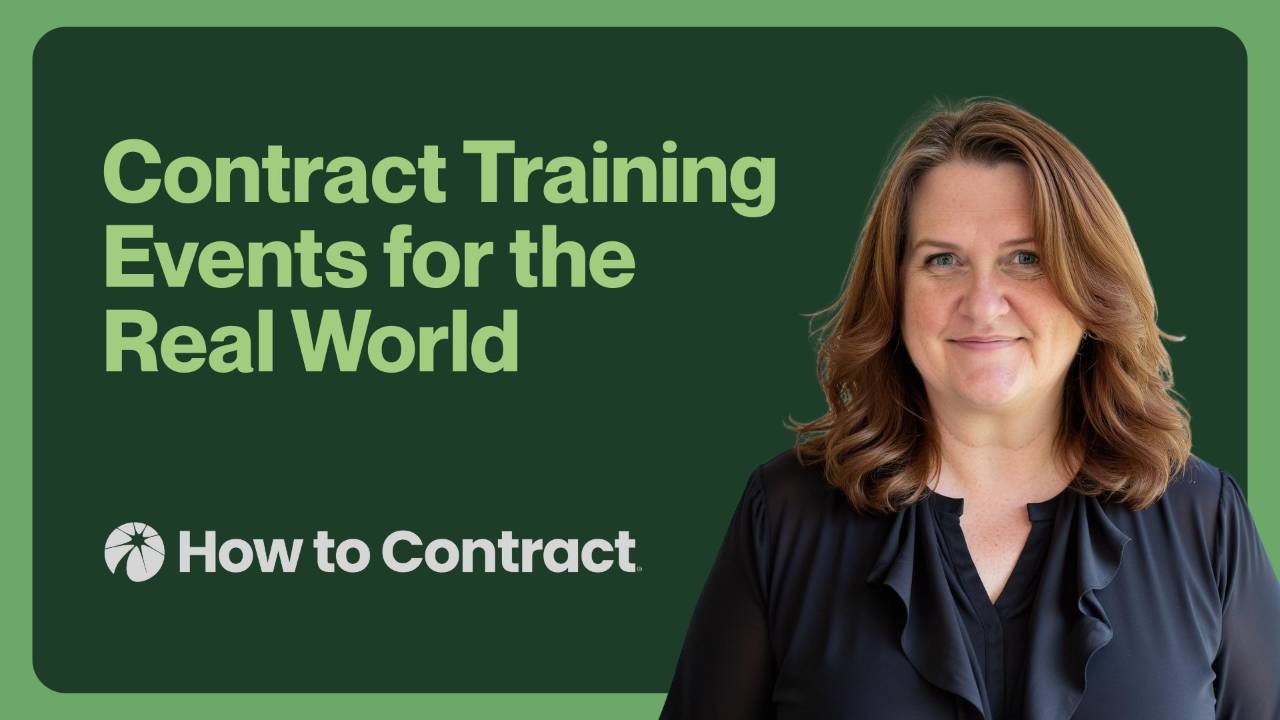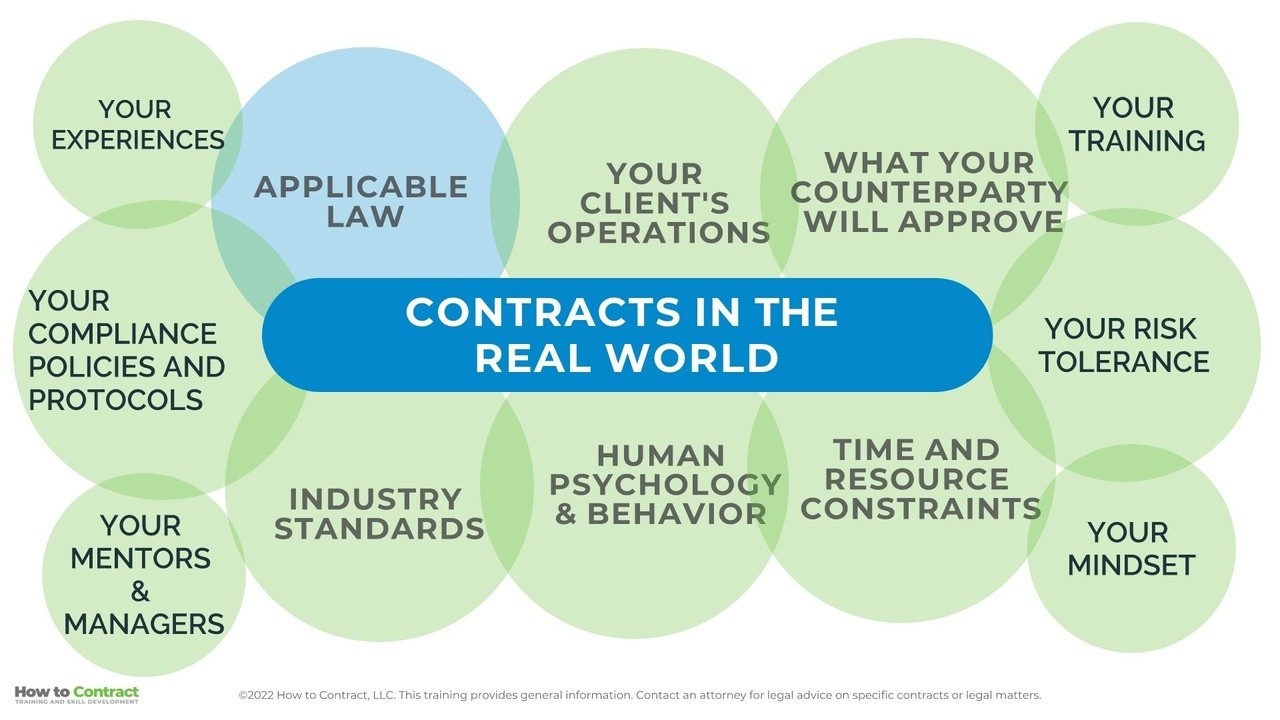
How Lawyers and Professionals Work with Contracts in the Real World
I talk a lot about how I created How to Contract training business to help lawyers and professionals "learn how we draft and negotiate in the real world."
This visual explains what I mean by that slogan.
Yes, applicable law is essential to our contract drafting, but in my experience, it's only a small part of contracts in the real world.
The real world requires contract lawyers and professionals also to factor in resource constraints, unreasonable counterparties, time deadlines, competing stakeholders, compliance requirements, operational screw-ups, financing limitations, your team's anxiety, your manager's idiosyncrasies, your self-doubt, and so many other factors.
That's why contract training needs to be about WAY more than an academic interpretation of what contract case law says about how to word a provision.
Because that perfect model clause you pulled from some expert's website or book may be wonderful, but what do you do if your counterparty won't accept it?
Yes, clear drafting is an important goal, but in the real world, being a bit vague or imprecise is sometimes the best option. Do you know when that is?
Yes, academic analysis of case law highlight disputes in past cases and help us issue-spot and shape our wording.
But issue-spotting doesn't get deals done.
It doesn't help at 6 pm on a Thursday when you have to send the counterparty the contract before the end of your workday, and you still have to decide what to concede and what to hold fast.
Lawyers and professionals have way too many contracts and related issues to manage with way too little time and resources to do it. They have to consider hundreds, maybe thousands, of individual data inputs and then make the call for their company.
They don't care about seven different types of language in contracts or whether best efforts is different from reasonable efforts.
We need to help contract lawyers and professionals learn what it depends on, how to make those judgment calls, what to consider, what they do when the counterparty doesn't agree, or they screwed something up,
They need the training to make the best decisions possible when there are no great choices, all with imperfect information, conflicting inputs, and unreasonable deadlines.
THAT'S what I mean when I talk about contracts in the real world.
It is time for those of us who have learned the hard way on what "it depends" to give back that knowledge to those still figuring it out.
Let's train them with information that they can use in the job they have today, not how to draft perfectly with unlimited time and compliant counterparties. Because I don't know anybody for whom that is the real world.
We have more work to do. And I'm ready to do my part to help.
Stay tuned for more specifics later this week on how How to Contract is filling this practical contract training void. There is SO MUCH to come.
How to Contract's membership is designed to help you build real-world expertise with commercial contracts. Get access to our comprehensive system of live and on-demand courses, weekly lessons, detailed playbooks, and more. Join today!

